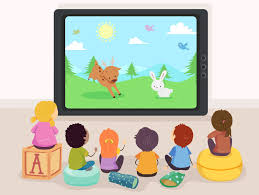Character development represents one of education’s most essential yet challenging aspects. While academic skills receive structured attention through curriculum standards, the cultivation of values and social-emotional competencies often falls into murkier territory. The thoughtful teacher recognizes the need for deliberate character education but may struggle to find resources that resonate with young audiences. Increasingly, kids animated shows fill this gap, offering storylines and character interactions that model positive values in accessible, engaging formats that spark meaningful discussions both in classrooms and homes.
The most effective character education approaches recognize that children learn ethical frameworks not through abstract instruction but through narratives that illustrate values in action. Animated programming excels at creating these narrative frameworks, presenting moral dilemmas and their resolutions in ways that children intuitively understand. When educators and parents collaborate around these shared stories, they create consistent messaging that reinforces key character attributes across different environments in a child’s life.
This collaborative approach requires intentional communication between school and home. Progressive teachers often share information about which animated programs they’re incorporating into classroom discussions, explaining the specific values or social skills being emphasized. This transparency allows parents to continue conversations at home, perhaps by watching additional episodes together or discussing how the animated scenarios relate to real-life situations the child might encounter.
The universal appeal of well-crafted animation crosses cultural and socioeconomic boundaries, making it an equalizing factor in diverse educational communities. Unlike resources that might require specific background knowledge or language proficiency, animated stories communicate through visual language that all children can access, regardless of their starting points. This accessibility makes animation particularly valuable in multicultural classrooms where students come from varied backgrounds.
Research in child development consistently shows that young children learn primarily through observation and imitation. Animated characters serve as powerful models whose behaviors children often emulate. When these characters demonstrate conflict resolution, emotional regulation, perseverance, or empathy, they provide concrete examples that children can internalize and apply in their own interactions. The fictional nature of these scenarios actually proves advantageous, allowing for clearer cause-and-effect relationships than the complex situations of real life.
The sequential nature of many animated series supports ongoing character development discussions throughout the school year. Rather than isolated lessons on values, teachers can revisit familiar characters as they face new challenges, building on students’ existing emotional investment in these figures. This continuity reinforces the understanding that character development is a lifelong journey rather than a set of discrete skills to master.
Parents sometimes express concern about screen time, questioning whether animated content contradicts recommendations for limiting digital media exposure. Educational experts suggest framing the discussion around content quality rather than simply screen time quantity. When animation serves specific educational purposes and facilitates meaningful discussion, it represents intentional media consumption rather than passive entertainment, aligning with recommendations for purposeful engagement with digital content.
The emotional distance provided by animated scenarios creates psychological safety for discussing sensitive topics. Children who might feel uncomfortable talking directly about personal experiences with bullying, exclusion, or failure often willingly analyze these situations when they happen to animated characters. This displacement allows for objective consideration of complex social dynamics without the vulnerability of personal disclosure, making animation a valuable tool for addressing challenging topics.
Teacher education programs increasingly include media literacy components that prepare future educators to evaluate and implement animated resources effectively. These programs emphasize critical analysis skills, helping teachers distinguish between animations designed primarily to sell merchandise versus those crafted with genuine educational intent. This discernment ensures that classroom time invested in animated content delivers meaningful learning outcomes rather than simply commercial exposure.
The collaborative potential extends beyond the teacher-parent relationship to include school counselors, who often incorporate animated references into social-emotional learning sessions. When counselors align their character development work with animated examples used in classrooms, they reinforce key concepts through multiple channels, increasing the likelihood that children will internalize and apply these lessons in their own behavior.

